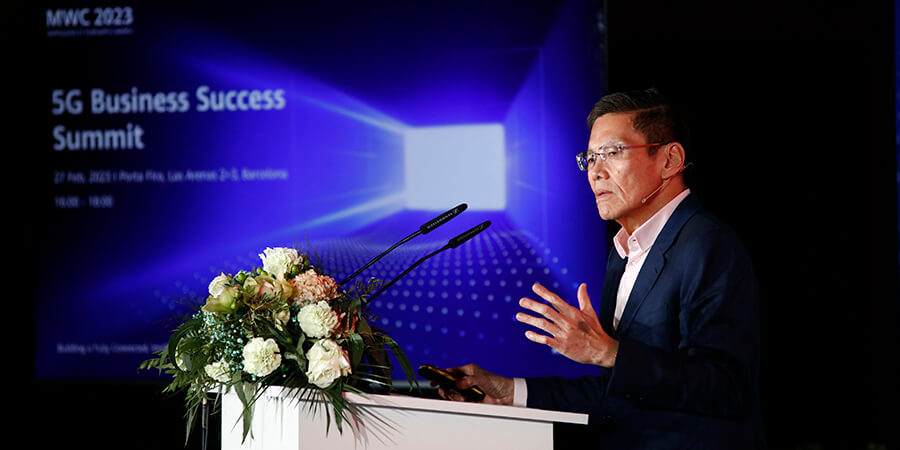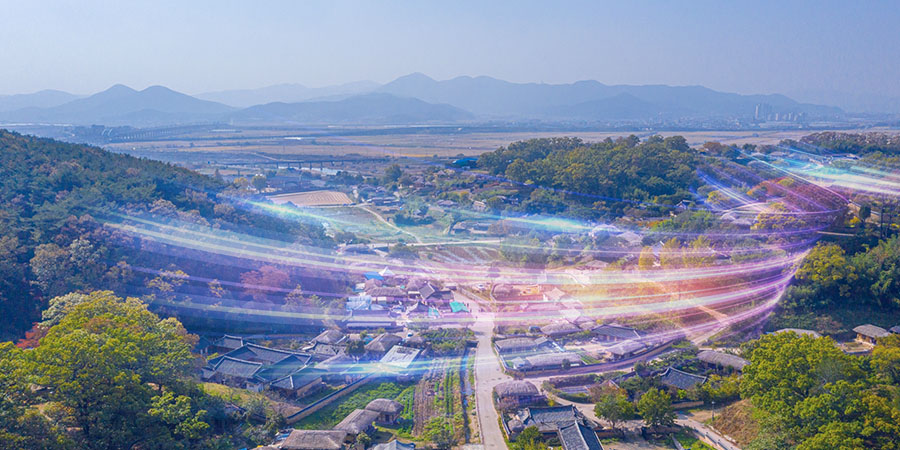Recent advancements and the convergence of three important technologies: artificial intelligence, IoT and edge computing, will drive the fourth industrial revolution, reshaping industries and subsequently, consumer behavior. These three key drivers for what has been dubbed Industry 4.0 are very promising, given that they are mobile-based and intelligent, and will connect the physical, digital and virtual world for everyone. And this is why the race to 5G has continuously become more competitive, especially in Thailand, which has become among the most impressive 5G success stories in Southeast Asia.
During his keynote speech at the World Mobile Congress 2023, Allen Lew, board member and chairman of the executive committee of AIS, underlined the opportunity that telecom operators like them can take advantage of to reshape the future by maximizing their 5G investments.
He said, “I believe if we as telcos take advantage of what’s going to happen with the fourth industrial revolution, we truly have an opportunity to reshape our future and change the perspective from a telco being commoditized, a telco having a very low return on investment for shareholders to one that uses innovation and enhanced customer experience to re-shape our brand, create a whole new environment in which our investors, our customers and our employees will look at us differently.”
To achieve this, Lew pointed suggested focusing on two other capabilities that operators have not fully utilized at scale, these being latency and the capacity of the network with 5G to handle thousands, if not hundreds of thousands of devices within a cell site. These are the two capabilities that have not yet been fully actualized, and if the “three Ts” of data, AI and edge computing are combined, he said, “we can create whole new different customer value propositions for consumers and business customers.”
Lew continued, “As telcos, I’m sure all of you know this, we have two goals in life: to delight our customers by enhancing their lives with digital products and connecting them to the Internet.”
He suggested first allowing them to automate and thus focus on increasing penetration by having more eSIMs and more intelligent devices.
With edge computing, he stressed the importance of placing computing throughout clouds closer to where data is being generated “to gather much more data coming up and understand responses with insights, with decisions from that technology.”
Lew also highlighted the process of re-engineering. He said that one cannot go to a corporate institution and resell the cloud. He explained that for them to win, they must consider three key factors. The first is deploying the best network. “That is a given. It is the core of our business. It is where our trust is based. But the mindset shift needs to change when we are rolling out 5G.” He continued, “It is a slight nuance, but it is a big change in them, so how we operate our networks. To make sure that by and large, the network has the ability to take all the data that is coming from all the different base stations, the thousands of base stations that you have, to predict congestion, so that it can automatically reroute the traffic. Predict failures and move the traffic around and predict when different parts of the network will be congested so you can move it.”
Another key factor is the nature of “living” itself. He detailed this as the propensity for living organisms — like humans — to adapt to their environment and thus change. “We need to make sure that our networks are not only autonomous, but they are living in the sense that it is living not just in your minds as network engineers or network operators but living in the minds of our consumers.” To this end, he predicts that consumers will eventually seek upgraded products and services, and network operators should thus be able to adjust to these ever-changing demands. To take 5G to a higher level, Lew suggested shifting the mindset: “Change from focusing on humans to where the future is. Focus on the beauty, the blue ocean, the low penetration of connected devices and how you can make these connected devices work.”
Next, he suggested considering how to bring additional capabilities to improve the operator’s knowledge about network design, network connectivity and network architecture. This will enable them to combine the three technological solutions together with 5G to offer consumers hyper-personalization and real-time, contextual services.
Finally, Lew also noted that having the same capabilities and management expertise go to enterprises will not just digitalize and automate them, but help bring them into “the new era.” “An era where it is not just about reacting to what your data is telling you but to predict what you need to do with your customers, with your efficiencies as a result of real-time data that we will be able to collect, predict what you need, process and create insights from that data for our customers.”







